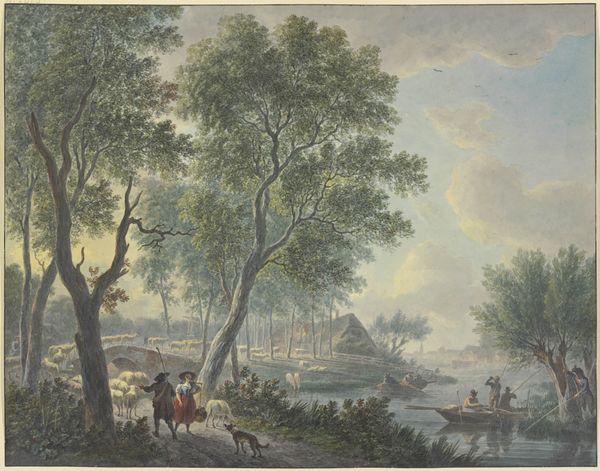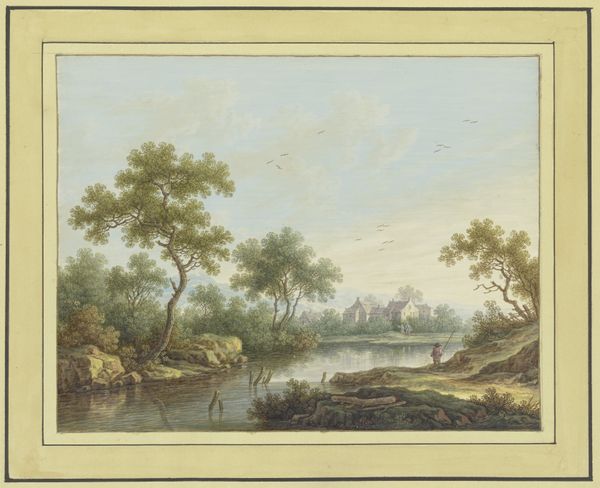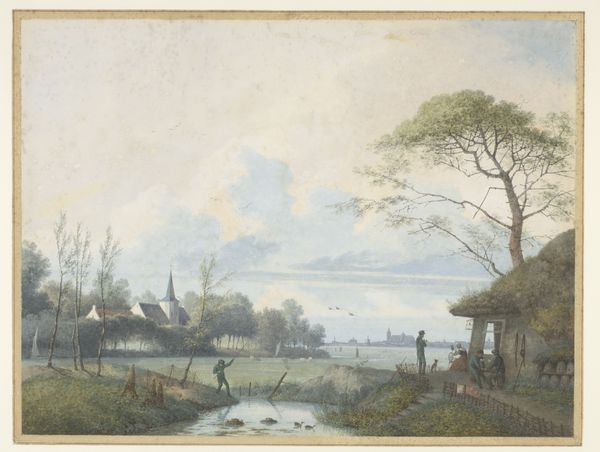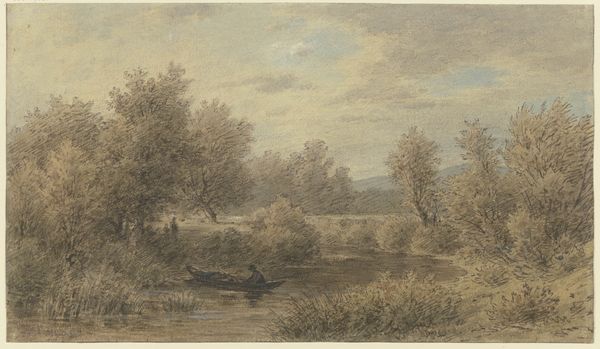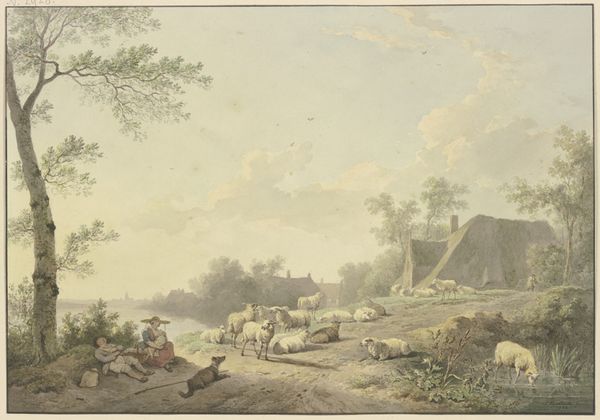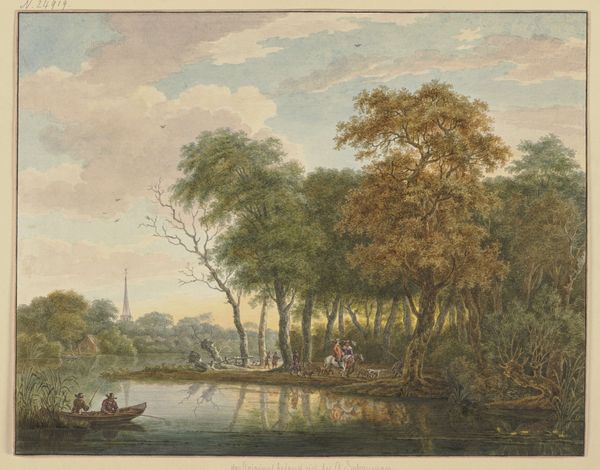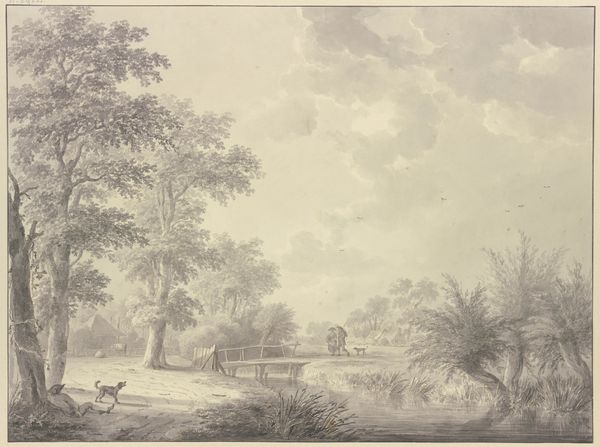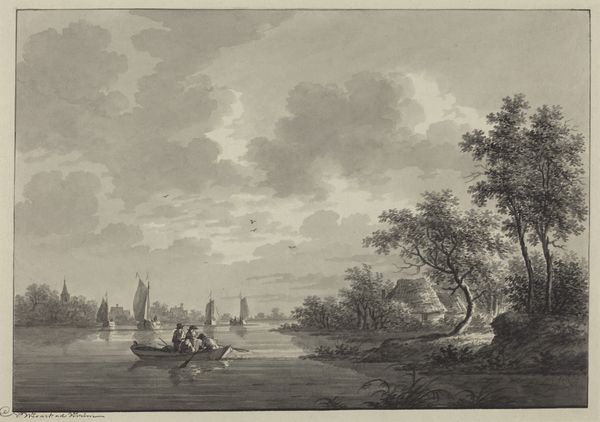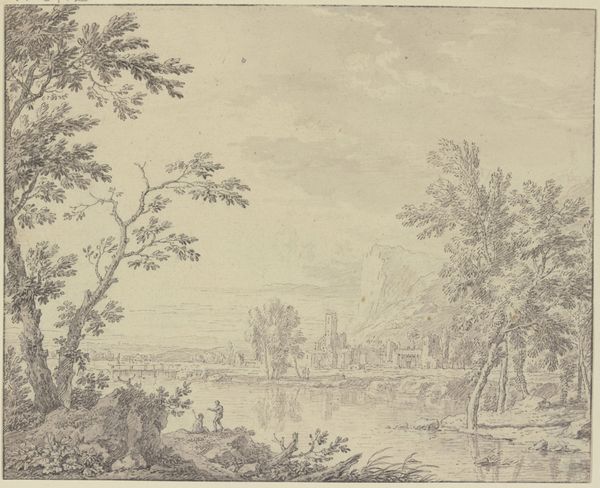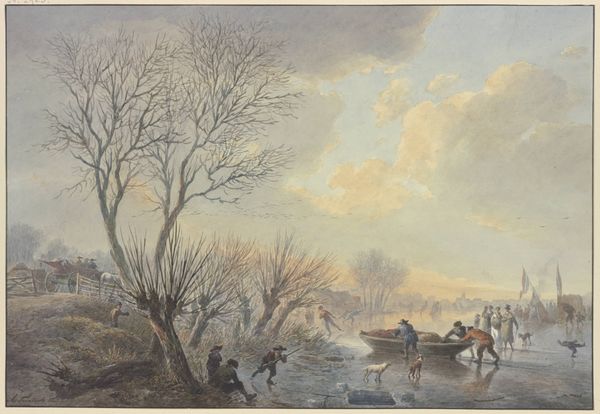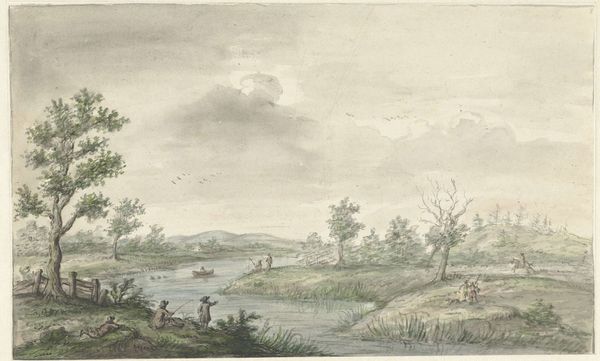
Nebliger Morgen an einem Flusse, am Ufer sieben Kühe, zum Teil im Wasser stehend 1803
0:00
0:00
drawing, paper, watercolor, ink, pastel
#
drawing
#
landscape
#
paper
#
watercolor
#
ink
#
romanticism
#
pastel
#
watercolor
Copyright: Public Domain
Curator: Today, we’re looking at "Misty Morning on a River, with Seven Cows on the Bank, Some Standing in the Water," created around 1803 by Abraham Teerlink. It’s a watercolor, ink, and pastel drawing on paper. Editor: It evokes a sense of quiet rurality, a hushed, almost melancholic atmosphere, perhaps alluding to the socio-economic disparities inherent in agrarian societies. Curator: You see the Romantic sensibility, certainly. The mists soften the landscape, creating an almost idealized pastoral scene. Consider how the cow, often a symbol of sustenance, recurs through art history representing wealth disparity. The rendering here is quite beautiful though. Editor: Beautiful, yes, but let’s think about what's absent. We don't see the harsh realities of farm life or any active struggle within this society; we see, as you put it, idealization. The mist almost veils or obscures reality. Curator: The hazy light almost suggests a dreamlike state. But observe Teerlink’s artistic choices in the early 19th century: cows and idyllic scenes reflected an emergent market keen to see and purchase artwork reflecting an imagined world—not a gritty reality. Editor: You bring up an interesting point. By muting the complexities, by depicting serenity rather than reality, the piece reinforces a comfortable but potentially misleading narrative. Are we, even today, in our appreciation of this work, participating in a kind of historical amnesia? Curator: Perhaps. The work also demonstrates emerging stylistic techniques: subtle shading and layered washes of color. Consider how he blends the earthly hues. Notice also the careful balance between the pastoral scenes on both river banks. Editor: Those carefully arranged scenes echo the ongoing societal narrative that equates an idyllic life to morality, which obscures deeper systemic issues. This imagery often symbolizes innocence and purity within Western cultural archetypes. Curator: Precisely. That resonates through Romanticism, reflecting a deep interest in representing, shaping even, societal consciousness around simple, humble realities. Editor: It serves as a strong reminder that the meanings and impact of images evolve and accumulate over time. Even these ostensibly "simple" scenes hold layers of coded history and ideology. Curator: Indeed, and considering its place within Romanticism, and even art history as a whole, lets it resonate even more vividly. Editor: Thank you. I am certain viewers will engage thoughtfully now.
Comments
No comments
Be the first to comment and join the conversation on the ultimate creative platform.
